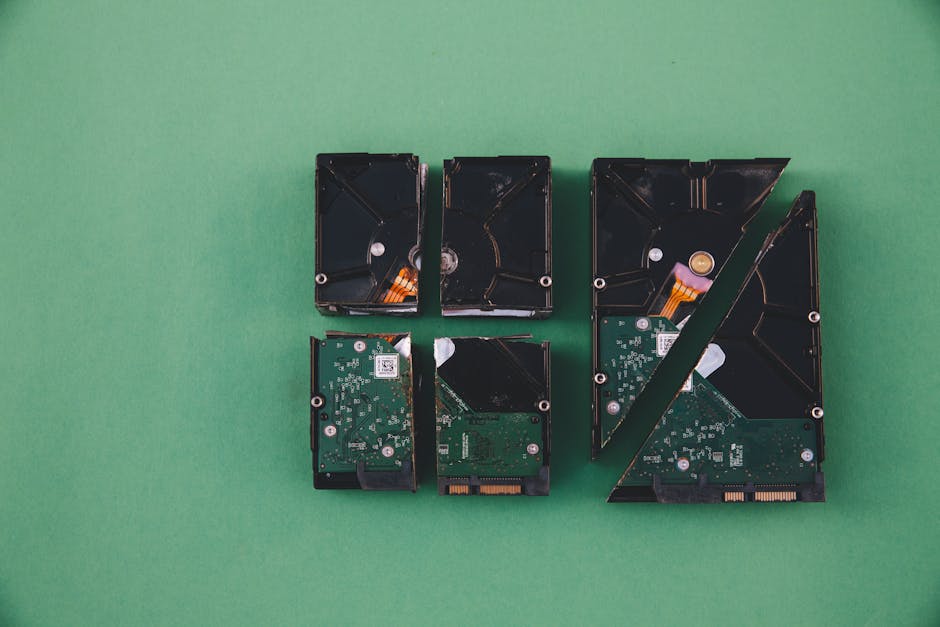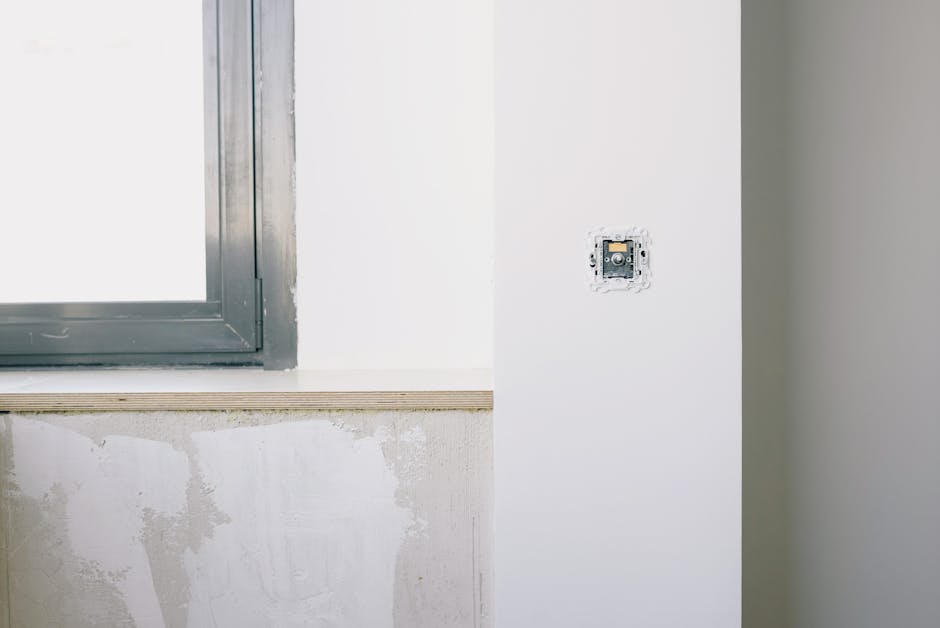6 Penyebab Gagal Reset This PC dan Cara Mengatasinya

6 Penyebab Gagal Reset This PC dan Cara Mengatasinya
Ah, the dreaded "Reset This PC" failure. It's like promising your computer a fresh start, a digital spa day, only to slam the door in its face. You're aiming for a clean slate, a performance boost, a chance to exorcise the digital demons lurking in your system... but instead, you're met with an error message colder than a penguin's pedicure. Don't despair! This guide is your digital exorcist, here to help you understand why your "Reset This PC" attempt crashed and, more importantly, how to fix it.
1. Corruption Central: The Case of Damaged System Files

Think of your system files as the intricate gears of a Swiss watch. One tiny imperfection, one grain of sand, and the whole thing grinds to a halt. Similarly, corrupted system files are a common culprit behind "Reset This PC" failures. These files can become damaged due to a variety of reasons, including:
a. Sudden Power Outages: Imagine your computer is halfway through writing a crucial system file and BAM! The lights go out. The incomplete file is left hanging, like a sentence without a period.
b. Malware Mayhem: Malicious software loves to wreak havoc on your system. It can corrupt files, delete vital components, and generally make a mess of things. Think of it as digital graffiti on your perfectly painted walls.
c. Disk Errors: Physical errors on your hard drive or SSD can lead to file corruption. These errors can manifest as bad sectors, which are essentially unusable portions of your drive.
How to Fix It:
i. Run System File Checker (SFC): This built-in Windows tool scans for and attempts to repair corrupted system files. To run it, open Command Prompt as an administrator (search for "cmd," right-click, and select "Run as administrator") and type sfc /scannow. Press Enter and let it do its thing. It's like a digital handyman patching up the holes in your system.
ii. Use DISM (Deployment Image Servicing and Management): DISM can repair the Windows image, which is the foundation upon which your operating system is built. In the same Command Prompt window, type these commands, pressing Enter after each:
DISM /Online /Cleanup-Image /CheckHealth
DISM /Online /Cleanup-Image /ScanHealth
DISM /Online /Cleanup-Image /RestoreHealth
Think of DISM as the structural engineer, reinforcing the beams and pillars of your operating system. The `CheckHealth` and `ScanHealth` commands are like preliminary inspections, while `RestoreHealth` is the actual repair process.
2. Driver Drama: Outdated or Incompatible Drivers

Drivers are the translators between your hardware (like your graphics card, network adapter, and printer) and your operating system. When these translators speak different languages (i.e., are outdated or incompatible), things can get lost in translation, leading to system instability and, you guessed it, "Reset This PC" failures.
How to Fix It:
a. Update Your Drivers: The easiest way is to use Device Manager. Search for "Device Manager" in the Windows search bar, open it, and look for devices with yellow exclamation marks. These indicate potential driver issues. Right-click on the device and select "Update driver." Choose "Search automatically for drivers" to let Windows find and install the latest drivers. Alternatively, you can visit the manufacturer's website (e.g., NVIDIA for your graphics card, Intel for your chipset) and download the latest drivers manually. Think of this as enrolling your hardware in a language class to better communicate with Windows.
b. Uninstall Problematic Drivers: If updating doesn't work, try uninstalling the driver completely and then restarting your computer. Windows will often automatically reinstall a generic driver that may be more stable. If not, you can try the "Scan for hardware changes" option in Device Manager to prompt Windows to find the driver again.
3. The Storage Space Specter: Insufficient Disk Space

The "Reset This PC" process requires a significant amount of free disk space to temporarily store files and perform the necessary operations. If your hard drive is crammed tighter than a clown car at a circus, the process will likely fail. Think of it like trying to build a sandcastle on a beach that's already completely covered in towels. There's just no room!
How to Fix It:
a. Free Up Disk Space: The simplest solution is to delete unnecessary files. Use Disk Cleanup (search for "Disk Cleanup" in the Windows search bar) to remove temporary files, downloaded program files, and other clutter. Uninstall programs you no longer use. Move large files (like videos and photos) to an external hard drive or cloud storage service. Aim for at least 20-30 GB of free space on your system drive (usually the C: drive). Think of it as decluttering your digital attic.
b. Use Storage Sense: Windows 10 and 11 have a built-in feature called Storage Sense that can automatically free up disk space by deleting temporary files and emptying the Recycle Bin. To enable it, go to Settings > System > Storage and toggle the "Storage Sense" switch to "On." You can also configure Storage Sense to run periodically. This is like hiring a digital cleaning service to keep your hard drive tidy.
4. The Rollback Riddle: Previous Reset Failure

Sometimes, a previous attempt to "Reset This PC" can leave behind remnants that interfere with subsequent attempts. This is especially true if the previous attempt was interrupted or unsuccessful. Imagine trying to repaint a wall that still has patches of old, peeling paint. You need to smooth things out before you can apply a fresh coat.
How to Fix It:
a. Delete the $WINDOWS.~BT and $WINDOWS.~WS Folders: These hidden folders often contain leftover files from previous Windows installations or reset attempts. To see them, you need to enable "Show hidden files, folders, and drives" in File Explorer (View > Options > Change folder and search options > View tab). These folders can be quite large, and deleting them can free up disk space as well. However, be careful not to delete any other system files accidentally! Think of this as a targeted demolition of digital debris.
b. Clean Boot: A Clean Boot starts Windows with a minimal set of drivers and startup programs. This can help isolate whether a third-party application is interfering with the "Reset This PC" process. To perform a Clean Boot, search for "msconfig" in the Windows search bar and open System Configuration. In the Services tab, check "Hide all Microsoft services" and then click "Disable all." In the Startup tab, click "Open Task Manager" and disable all startup items. Restart your computer and try the "Reset This PC" process again. If it works, you can gradually re-enable the services and startup items one by one to identify the culprit. This is like putting your computer into quarantine to identify the source of the infection.
5. Partition Problems: Boot Configuration Data (BCD) Issues

The Boot Configuration Data (BCD) stores information about how your computer starts up, including the location of the operating system. If the BCD is corrupted or misconfigured, it can prevent the "Reset This PC" process from completing successfully. Think of it as a faulty GPS system that can't guide your computer to the right starting point.
How to Fix It:
a. Use the Bootrec.exe Tool: You'll need to boot from a Windows installation media (USB drive or DVD). If you don't have one, you can create one using the Media Creation Tool from Microsoft. Once you've booted from the installation media, select "Repair your computer" instead of installing Windows. Then, navigate to Troubleshoot > Advanced options > Command Prompt. In the Command Prompt window, type the following commands, pressing Enter after each:
bootrec /fixmbr
bootrec /fixboot
bootrec /scanos
bootrec /rebuildbcd
The /fixmbr command writes a new Master Boot Record. The /fixboot command writes a new boot sector. The /scanos command scans for installed operating systems. The /rebuildbcd command rebuilds the Boot Configuration Data. Think of this as recalibrating your computer's internal GPS system.
6. The Nuclear Option: When All Else Fails, Fresh Install

If you've tried all the troubleshooting steps above and you're still banging your head against the wall, it might be time for the nuclear option: a fresh installation of Windows. This is a more drastic measure, as it will erase all data on your system drive, but it can be the only way to resolve deeply ingrained system issues. Think of it as tearing down your old house and building a brand new one from the ground up.
How to Do It:
a. Back Up Your Data: Before you do anything else, back up all your important files to an external hard drive, cloud storage, or another safe location. Once you reinstall Windows, those files will be gone forever! This is crucial! Imagine accidentally throwing out all your photos and important documents while decluttering.
b. Use the Media Creation Tool: Download the Media Creation Tool from Microsoft and use it to create a bootable USB drive or DVD with the latest version of Windows. Boot from the installation media and follow the on-screen instructions to install Windows. Make sure to select "Custom: Install Windows only (advanced)" during the installation process and delete all existing partitions on your system drive before creating new ones. This will ensure a completely clean installation. Consider this your chance to organize your new digital house exactly the way you want it.
The "Reset This PC" process, while intended to be helpful, can sometimes be a frustrating experience. But with a little knowledge and troubleshooting, you can often overcome the obstacles and give your computer the fresh start it deserves. Remember to back up your data regularly, keep your drivers updated, and maintain a healthy dose of digital hygiene. Happy resetting (hopefully successfully)!